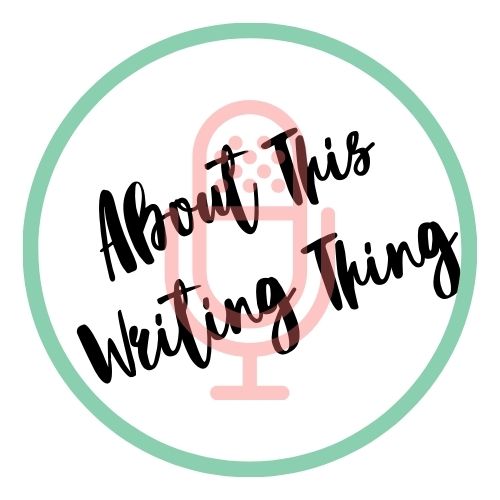- Fiction
- RELATED
Episode 31: You Don't Have to Shout! Using Dramatic Punctuation Your Writing

Show Notes & Resources:\n\xa0\nHello, and welcome to About This Writing Thing, a weekly podcast about living the writing life. I'm your host, Sayword B. Eller, novelist, short story writer, and podcaster.\n\xa0\nThis week I'm talking about dramatic punctuation. Specifically exclamation points and ellipses. You should know now that I am the queen of the ellipses.\n\xa0\nFirst, I want to let you know I'm still taking clients for my critique and editing services. You can visit saywordbeller.com to take a look at my testimonials and send me a message to schedule, or you can head over to Fiverr.com/saybeller to sign up for one of my gigs.\n\xa0\nAlso, I'm asking you what you want to talk about in 2021. I have several topics lined up for the remainder of this year and into the first of the year, but I'd like to know what you'd like to hear about. This can't be all about me all the time, right? If you follow me or About This Writing Thing on Instagram, just send me a PM, or send me an email at sayword@saywordbeller.com.\n\xa0\nNow, let's talk dramatics.\n\xa0\nWe've all heard Elmore Leonard's writing advice that we shouldn't use more than 2 - 3 exclamation points per 100,000 words in a novel. Since my novels are typically around 80k-90k, that means I should only use 2 in the entire book, according to Leonard. Thankfully, this isn't the case. Not even he followed this rule, according to Ben Blatt's 2017 article in The Atlantic that I will link in the description box below. But I get the sentiment and I constantly pass it on to new (and even seasoned) writers. Too many exclamation points in your narrative are distracting and overwhelming. Period.\n\xa0\nAs your trusted (I hope) writing guru (can I call myself a guru?), I scoured the internet to find a few sources on using exclamation points in fiction writing. Turns out, I didn't really need to because at this point in my career I know full-well why I shouldn't use them often. I mean, who wants their readers to feel like they're being yelled at constantly. No one is that dramatic! Am I right?\n\xa0\nThe Write Good Books Blog featured a post in August 2017 that had this to say about using too many exclamation points in fiction writing:\nIt's a sign of weak writing - The rule of thumb is that the actions of your character(s) along with their dialogue should show the reader the height of emotion without the use of exclamation points. However, if you must use them, for crying out loud, don't say "he/she exclaimed or shouted or yelled" after the dialogue. We know they're shouting, screaming, or yelling because you've used an exclamation point.\nYour characters are not shouting all the time - Are they? I read a submission recently that had so many exclamation points in a half-page conversation that I was exhausted by the time the conversation had concluded. I know we get excited in conversation. I know sometimes we have very heightened passages of dialogue in reality. Personally, I think it's fine to have that one very dramatic scene, but that's the only one you get. Use it like it's your final lifeline and a million dollars is at stake. In other words, use it very carefully and only if it's absolutely necessary. \nIt makes everything seem rushed - Remember that ending scene in Clue? If you haven't watched it, stop right now and go watch it, but make sure you watch the version with the 3 endings. You can't get the full effect otherwise. Did you watch it? Okay. So, when Wadsworth is running around like mad with the rest of the group and they're trying to piece together what happened \u2026. That's what using too many exclamation points in like in writing. Yes, it's fun for that ten minutes on screen, but in a short story or novel it's tedious and exhausting. \nIt takes the reader out of the story - Think about the last time you read a novel with too many exclamation points. When I was studying history I used to read a lot of texts from the 19th century. Heads up, they LOVED exclamation points. They were used for effect and to hi